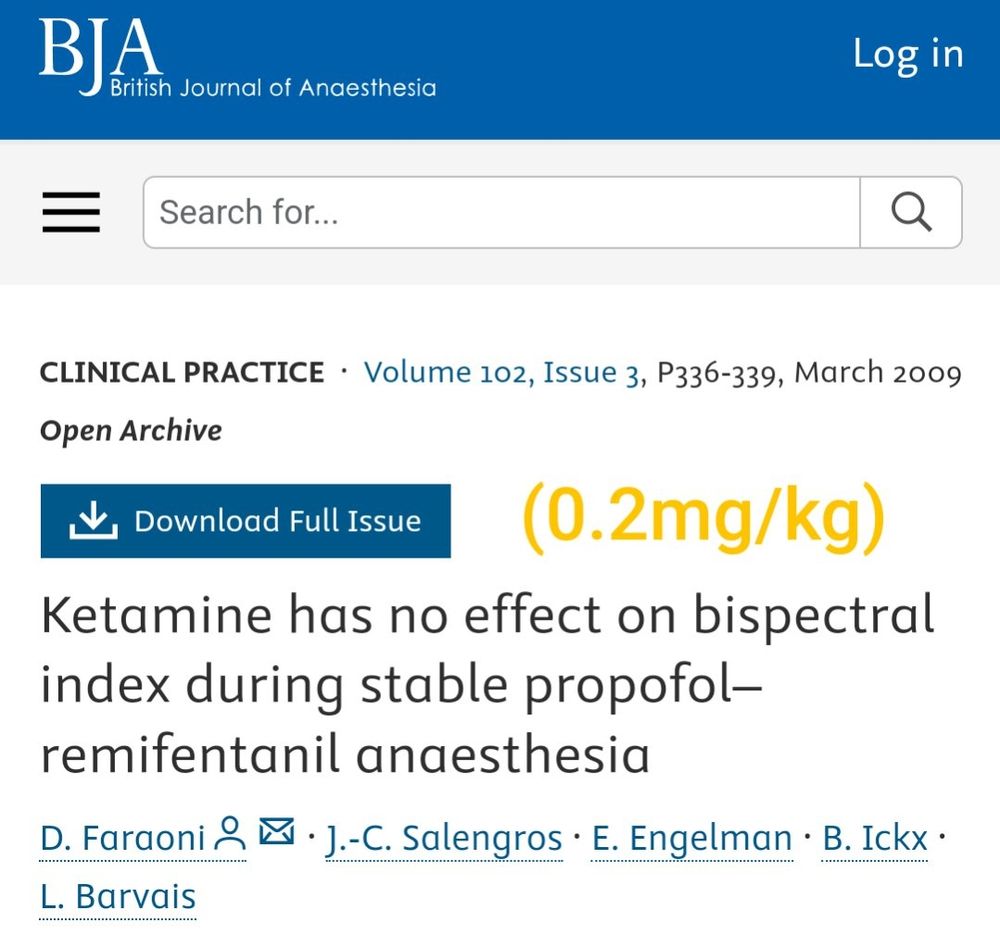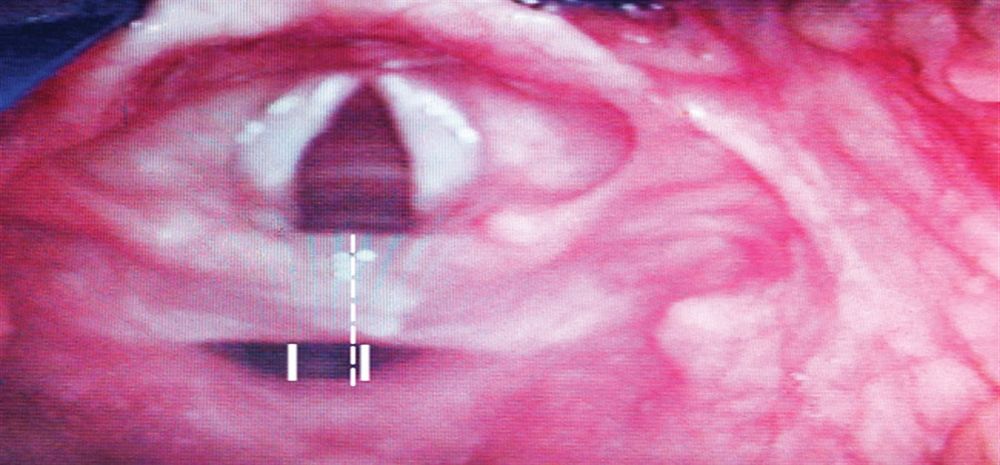I'll see what we can cobble together!
I'll see what we can cobble together!
(See image)
0.3mg/kg may have an effect but I feel clinically un likely
0.5mg/kg often will induce EEG changes that are associated with an rise in BIS index
If bolusing and concerned about rise in BIS value, give during a period of surgical stability

(See image)
0.3mg/kg may have an effect but I feel clinically un likely
0.5mg/kg often will induce EEG changes that are associated with an rise in BIS index
If bolusing and concerned about rise in BIS value, give during a period of surgical stability
Caveats noted!
Caveats noted!
Do you have a study I can look at?
Do you have a study I can look at?
person, the cost isn't their salary. It's the time that could be spent elsewhere. Helping with turnover, prepping for the next case etc
If performed by airway assistant - disagree with this practice - The cost is attention divided between multiple important tasks.
person, the cost isn't their salary. It's the time that could be spent elsewhere. Helping with turnover, prepping for the next case etc
If performed by airway assistant - disagree with this practice - The cost is attention divided between multiple important tasks.
person, the cost isn't their salary. It's the time that could be spent elsewhere. Helping with turnover, prepping for the next case etc
If performed by airway assistant - disagree with this practice - The cost is attention divided between multiple important tasks.
person, the cost isn't their salary. It's the time that could be spent elsewhere. Helping with turnover, prepping for the next case etc
If performed by airway assistant - disagree with this practice - The cost is attention divided between multiple important tasks.
Perioperative cardiac arrest has an incidence of 1:3000 (NAP7) - Arguably equally catastrophic so should every patient have defib pads put on at the start of a case?
Perioperative cardiac arrest has an incidence of 1:3000 (NAP7) - Arguably equally catastrophic so should every patient have defib pads put on at the start of a case?

Cricoid force should be performed by a team member with no other role.
Cricoid time x No of anaesthetics/ per hosp/ per year = large number
Aspiration low incidence in general anaesthetic pop. Cricoid becomes non cost effective.
Cricoid force should be performed by a team member with no other role.
Cricoid time x No of anaesthetics/ per hosp/ per year = large number
Aspiration low incidence in general anaesthetic pop. Cricoid becomes non cost effective.
Again, I qtn whether the rationale for RSI is sound.
This is my fav evidence FOR cricoid. journals.lww.com/anesthesia-a...

Again, I qtn whether the rationale for RSI is sound.
This is my fav evidence FOR cricoid. journals.lww.com/anesthesia-a...
Fine you've convinced me! But can I replace it with another fun acronym instead?
Fine you've convinced me! But can I replace it with another fun acronym instead?
So can I gas induce them?
Arguably 8% sevo can be reasonably quick...
I joke of course but I think if you're being really careful in frail patients you can reach an accidental plane of 'excitability'
If I'm honest I don't disagree with your points
So can I gas induce them?
Arguably 8% sevo can be reasonably quick...
I joke of course but I think if you're being really careful in frail patients you can reach an accidental plane of 'excitability'
If I'm honest I don't disagree with your points
The term RSI serves as a warning 'This patient is sick, Take care'
- Use roc not vec, have the suction under the pillow, think about asking for that NG prior
The term RSI serves as a warning 'This patient is sick, Take care'
- Use roc not vec, have the suction under the pillow, think about asking for that NG prior
that our usual practice has changed ie we should preox and sit up every patient?
I'd argue that a lot of the PUMA recommendations we don't do for all Pts - or at the very least we aren't scrupulously careful.
In a patient who 'needs' an RSI We take time to prepare.
that our usual practice has changed ie we should preox and sit up every patient?
I'd argue that a lot of the PUMA recommendations we don't do for all Pts - or at the very least we aren't scrupulously careful.
In a patient who 'needs' an RSI We take time to prepare.
I would agree, deeply paralysed and anaesthetised pt before instrumentation is key
But I think the 1st part - rapid - is important.
Risk of aspiration is not proportional to length of time without a protected airway, but does this mean I can take as long as I want with my induction?
I would agree, deeply paralysed and anaesthetised pt before instrumentation is key
But I think the 1st part - rapid - is important.
Risk of aspiration is not proportional to length of time without a protected airway, but does this mean I can take as long as I want with my induction?

